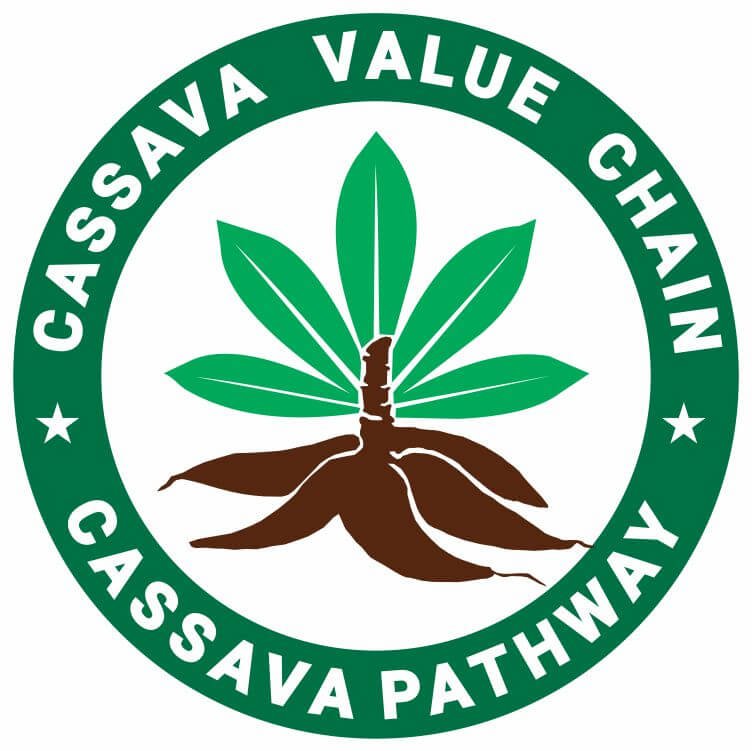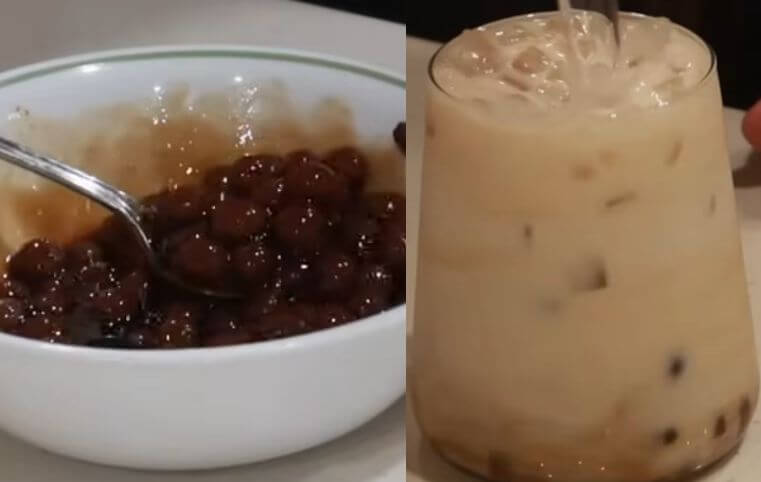Discover how to make boba pearls without tapioca starch, using alternative ingredients such as glutinous rice flour, cornstarch, agar-agar powder, sweet potato flour, and potato starch.
Learn to create delicious, chewy boba pearls that accommodate various dietary needs, including gluten-free and vegan preferences.
Explore detailed step-by-step recipes and tips to enjoy a unique bubble tea experience without traditional tapioca starch.
Related: Where to Purchase Modified Tapioca Starch
You might want to pin the image below.
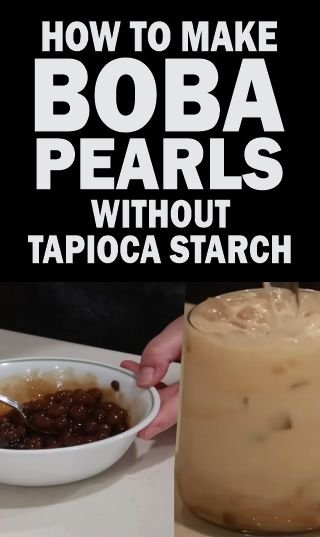
Introduction
Boba pearls, also known as tapioca pearls, have gained worldwide acclaim for their distinctive chewy texture and essential role in bubble tea.
Traditionally made from tapioca starch, these pearls offer a delightful and satisfying sensation that pairs perfectly with various teas and beverages.
Tapioca pearls are particularly known for their elasticity and ability to absorb flavors, creating a unique and ever-so-popular drink experience loved by people across the globe.
However, there are several reasons why one might seek alternatives to tapioca starch for making boba pearls.
Firstly, dietary restrictions such as gluten sensitivities or vegan preferences may limit the consumption of traditional tapioca-based pearls.
While tapioca starch itself is gluten-free, cross-contamination and added ingredients can sometimes pose concerns.
Some people may also encounter difficulty sourcing tapioca starch due to geographical or supply constraints.
This has led to a keen interest in exploring how to make boba pearls using alternative ingredients.
Substituting tapioca starch with different starches or flours can yield boba pearls that share similar textural qualities and can cater to various dietary needs.
These alternatives not only expand the accessibility of bubble tea but also offer a creative and satisfying culinary experiment.
Learning how to make boba pearls without tapioca starch and the process itself can deliver numerous benefits, such as accommodating food allergies, enhancing nutritional values, or simply presenting a new twist on a beloved classic.
Throughout the following sections, we will go deeper into various substitutes for tapioca starch, providing detailed recipes and tips to ensure the best possible outcome.
With these alternatives, you can continue to enjoy the delightful chewiness of boba pearls, regardless of dietary limitations or ingredient availability.
Related Posts
Tapioca Pearls Recipes Beyond Bubble Tea
Common Tapioca Starch Substitutes
Are Tapioca Balls the Same with Tapioca Pearls?
Tapioca Starch Industry Trends
Everything to Know about Modified Tapioca Starch
Easy Way to Make Tapioca Sticks
The Tapioca Syrup: Health Benefits and Properties
Tapioca Starch and Flour: Are they the Same?
Alternative Ingredients for Boba Pearls
When creating boba pearls without tapioca starch, several alternative ingredients can provide unique textures and flavors, catering to different dietary preferences and requirements.
These alternatives, while different from traditional tapioca, offer versatility and creativity in making the popular bubble tea addition.
Let’s take a closer look at them:
1. Glutinous Rice Flour
Glutinous rice flour is a widely used substitute for tapioca starch. This flour derives from sticky rice, known for its chewy and elastic properties, which mirrors the texture of tapioca pearls closely.
Boba pearls made with glutinous rice flour exhibit a similar chewiness that fans of traditional boba will appreciate.
Additionally, glutinous rice flour is relatively easy to find in Asian grocery stores, making it a convenient option for home boba makers.
2. Cornstarch
Cornstarch is another accessible alternative for creating boba pearls. Widely available in most supermarkets, cornstarch can form firm and slightly chewy pearls.
Its ease of use and affordability make it a practical choice for boba enthusiasts.
Although cornstarch may not replicate the exact texture of tapioca perfectly, it offers a firmer bite, which some might prefer in their bubble tea.
3. Agar-Agar Powder
For a vegan and vegetarian-friendly option, agar-agar powder stands out as an ideal choice.
Derived from seaweed, agar-agar creates jelly-like boba pearls that have a unique texture compared to tapioca.
These pearls are slightly more brittle but provide a translucent appearance and a smooth mouthfeel.
Agar-agar powder is also noted for its health benefits, such as aiding digestion, making it a wholesome alternative.
4. Sweet Potato Flour
Sweet potato flour offers a naturally sweet and chewy alternative for boba pearls. This flour, made from dried and ground sweet potatoes, imparts a subtle sweetness and distinctive flavor.
The pearls made from sweet potato flour are not only chewy but also come with a pleasingly earthy taste.
This ingredient can elevate the sensory experience of bubble tea, making it unique and enjoyable.
5. Potato Starch
Lastly, potato starch is a common alternative that can be used to make boba pearls.
Potato starch creates pearls with a slightly different texture, softer and less elastic than those made with tapioca.
However, it remains a suitable substitute, offering a mild flavor and firm consistency.
The versatility in texture and ease of incorporation make potato starch a viable option for crafting homemade boba pearls.
Each of these ingredients provides a different advantage and can cater to varying dietary needs and taste preferences.
By experimenting with these alternatives, one can discover new textures and flavors, enriching the experience of making and enjoying bubble tea.
Related: How Gluten-Free Are Tapioca Pearls?
Step-by-Step Guide on How to Make Boba Pearls Without Tapioca Starch for Each Alternative
Knowing how to make boba pearls without tapioca starch with alternative ingredients can offer new textures and flavors.
Below are detailed instructions for each substitute to tapioca starch, ensuring you achieve satisfying results.
We are going to use glutinous rice flour as the lead ingredient, which can be substituted with the other ingredients that follow.
1. Glutinous Rice Flour
To make boba pearls with glutinous rice flour, start by mixing 1 cup of glutinous rice flour with brown sugar and approximately 1/2 cup of boiling water.
Gradually combine until a pliable dough forms. Divide the dough into small portions and roll them into marble-sized balls.
Place the pearls on a lightly floured surface to prevent sticking. Boil a pot of water and cook the pearls for about 10-15 minutes until they rise to the surface and turn translucent.
For the best texture, let the cooked pearls sit in cold water for 10 minutes. This will give them a chewy consistency.
Mix the rice flour with brown sugar and boiling water and stir until a dough begins to form.
You can add more water or flour to get the consistency of a semi-liquid that can be molded into a pliable dough.

Mix the mixture continuously with a spatula to have the required uniform consistency.
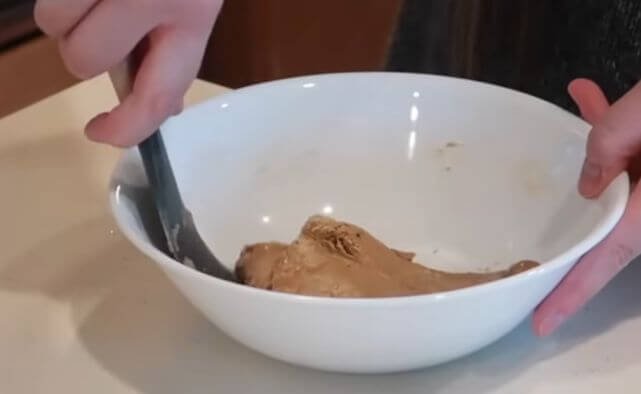
You can use your palm to knead to give you absolute control and a feel of the texture and consistency.
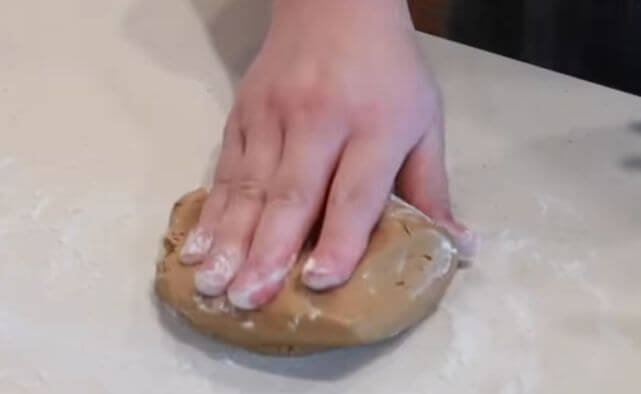
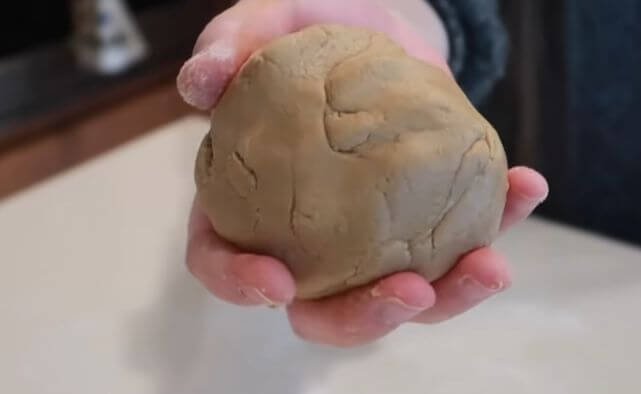
When you are satisfied with the consistency. You can roll the dough into these log-like shapes. This is to make it easier to form them into boba balls.
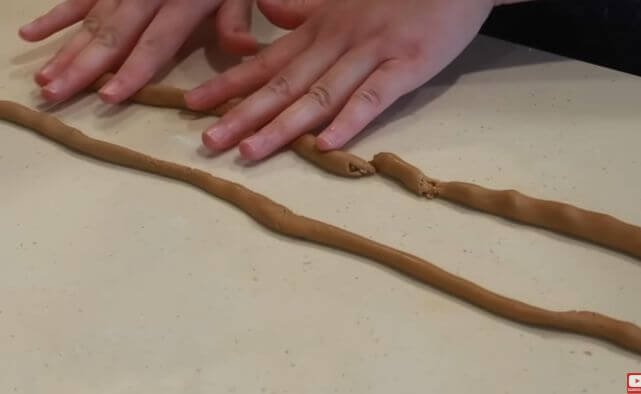
Now cut the long rolled logs into small pieces and roll them into balls with your fingers.
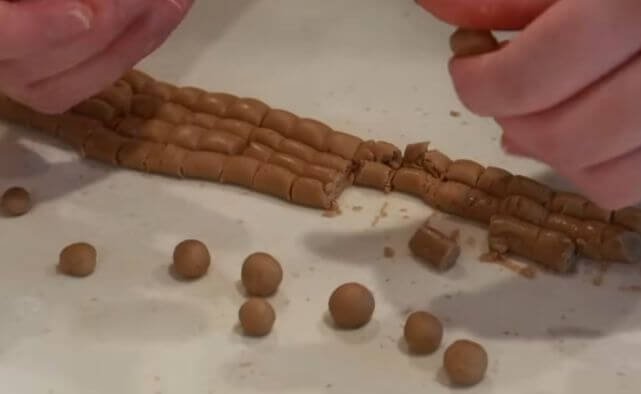
You would have to sprinkle the rice flour over the balls and make it coat all the balls. This is to make the balls not stick to each other as they can be very sticky.
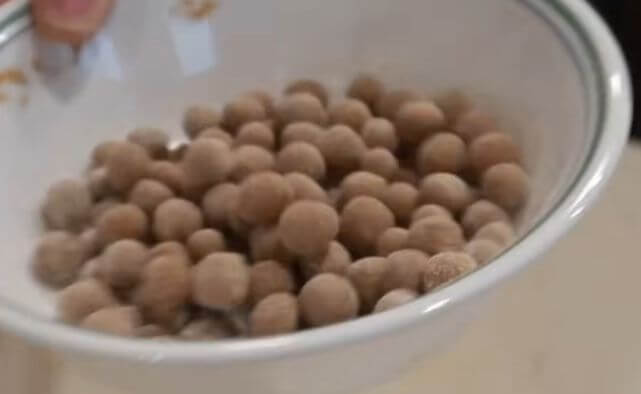
The next step would be to add the balls to a pot of boiling water and cook for about 4 minutes. The rice flour boba balls don’t take long to cook unlike the tapioca starch.
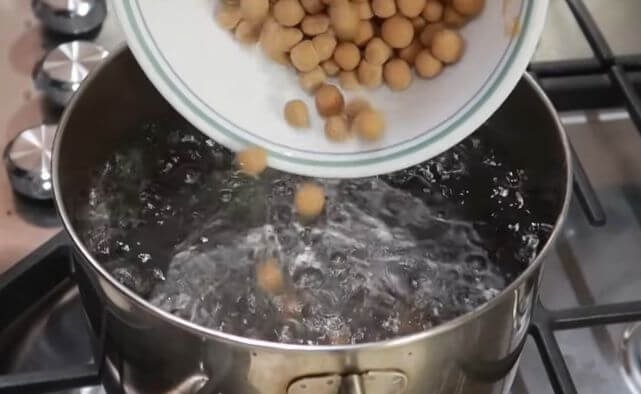
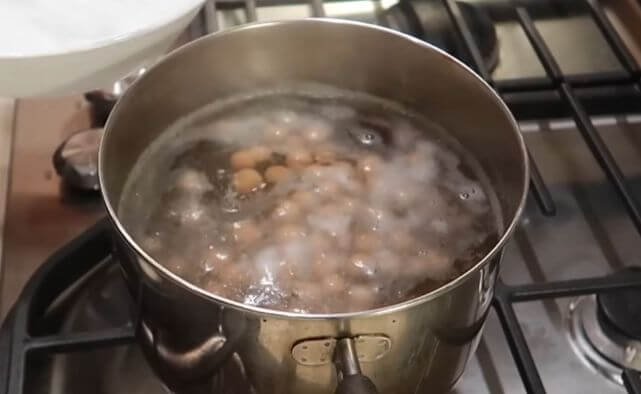
After it has cooked, remove it and put it into cold water to cool and then remove. You can then add your mixture of brown sugar or syrup and store.
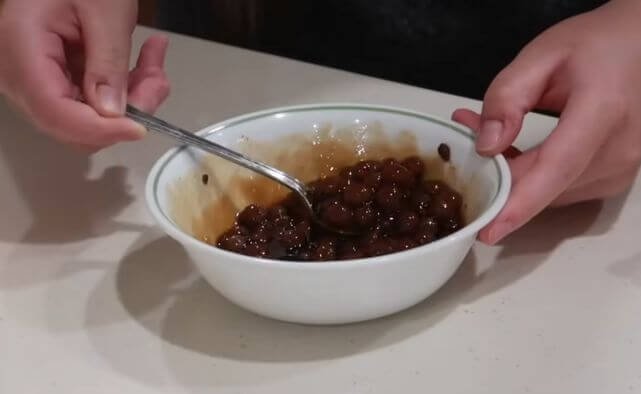
The chewy boba pearl is added to your tea or other liquid beverages and enjoyed.
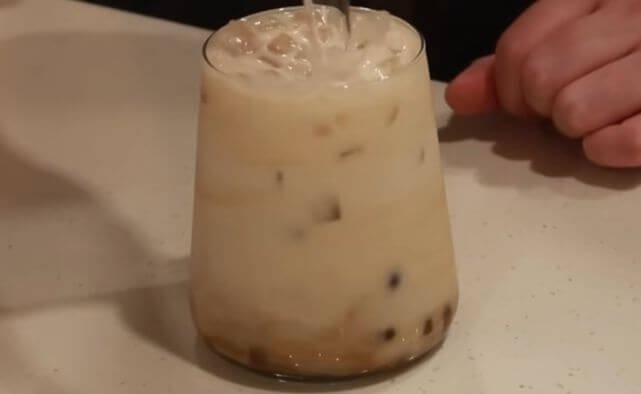
2. Cornstarch
For cornstarch-based boba pearls, mix 1 cup of cornstarch with 1/4 cup of water.
Knead until the dough is smooth. Roll the dough into thin logs and cut them into small pieces, then roll these pieces into balls.
Boil a pot of water and cook the pearls until they float, about 5-7 minutes. For optimal consistency, let the pearls cool in a bowl of cold water before usage. This helps them retain their bouncy texture.
3. Agar-Agar Powder
Agar-agar spheres are created by dissolving 1 teaspoon of agar-agar powder in 1 cup of boiling water. Stir continuously to dissolve the powder completely.
Pour the mixture into a small tray or drop it into cold oil using a syringe for smaller pearls. The liquid will solidify as it cools.
If flavoring is desired, add it to the boiling water before adding the agar-agar powder.
Store the jelly-like pearls in the fridge, which will maintain their shape and texture.
Related: Demystifying the Tapioca Resistant Starch
4. Sweet Potato Flour
To prepare sweet potato flour boba, combine 1 cup of sweet potato flour with 1/2 cup of boiling water, mixed with 2 tablespoons of sugar.
Stir until the mixture becomes a workable dough. Shape the dough into small balls. Boil the pearls in water for 10-12 minutes until they float.
To preserve their flavor, immerse the cooked pearls in a sugar solution before serving, enhancing their sweetness and preventing clumping.
5. Potato Starch
Boba pearls from potato starch require 1 cup of potato starch and 1/3 cup of boiling water.
Combine to form a dough. Roll the dough into long strips and cut into small portions, then shape into balls.
Cook the pearls in boiling water for approximately 8-10 minutes until they are buoyant and translucent. The texture may vary, giving a more tender but less chewy pearl.
Adjust the boiling time to achieve your preferred consistency. Immediate transfer to cold water after cooking will ensure the pearls remain soft yet firm.
By following these step-by-step instructions, you can successfully create boba pearls using ingredients other than tapioca starch, leading to an enjoyable and unique boba experience.
Related: Troubleshooting Tapioca Balls
Comparison of Boba Pearls with and Without Tapioca Starch
Boba pearls, traditionally crafted from tapioca starch, have a characteristic texture, flavor, and appearance that defines the classic bubble tea experience.
When comparing boba pearls made with and without tapioca starch, noticeable differences arise, influencing individual preferences and application in various types of drinks.
The Texture Difference
The texture difference is perhaps the most immediately evident distinction. Tapioca pearls possess a chewy, bouncy consistency that is integral to their popularity.
In contrast, boba pearls made from alternative ingredients, such as agar-agar, cornstarch, or potato starch, can exhibit varying textures.
Agar-agar pearls, for instance, are firmer and carry a gelatin-like consistency, while cornstarch-based pearls might be softer but somewhat less elastic than their tapioca counterparts.
Flavor
Flavor is another significant factor. Tapioca starch lends a neutral taste to the pearls, allowing them to easily absorb the accompanying syrup or drink flavors.
On the other hand, boba pearls made from other starches or gelling agents often retain slight intrinsic flavors that can subtly alter the overall taste of the drink.
For example, agar-agar might carry a faintly marine note, and potato starch can impart an earthier undertone.
Related: Tapioca vs Boba: How are they Different?
Aesthetics
Aesthetic differences are also noteworthy. Traditional tapioca pearls are semi-translucent, acquiring a shiny black or brown hue when cooked and soaked in syrup.
Alternative boba pearls, depending on the base ingredient, may not achieve the same level of translucency or gloss.
Agar-agar alternatives often appear more opaque and can vary in color based on the preparation.
Choosing a preferred type of boba pearl often depends on personal taste and the type of beverage being crafted.
For drinks where chewy textures are essential, such as classic milk tea, tapioca pearls remain the gold standard.
However, for lighter, fruit-based teas, agar-agar or cornstarch pearls might provide a refreshing variation with their unique textures and subtle flavor hints.
Ultimately, exploring these alternatives can lead to delightful discoveries that cater to a range of palates.
Conclusion
Making boba pearls without tapioca starch opens up a world of possibilities for home cooks, tea lovers, and those with specific dietary needs.
Whether you’re avoiding tapioca due to allergies, ingredient availability, or simply experimenting with new textures, these alternatives offer flexibility without sacrificing taste.
From glutinous rice flour to agar-agar powder, each substitute brings something different to the table, some chewy, some jelly-like, and some firm with a bite.
You don’t need specialized tools or rare ingredients to enjoy a delicious bubble tea experience.
With simple steps and the right ingredients, you can craft boba pearls that suit your taste and lifestyle.
Keep experimenting and enjoy your next drink with homemade pearls that reflect your twist.
Frequently Asked Questions
How can I make boba pearls without tapioca starch?
You can use glutinous rice flour, cornstarch, sweet potato flour, agar-agar powder, or potato starch. Each ingredient provides a different texture and taste when cooked.
Do boba pearls made without tapioca starch still have the same chewiness?
Not exactly. Glutinous rice flour offers the closest chew, while agar-agar gives a jelly-like feel, and cornstarch results in a slightly firmer, less elastic texture.
Are alternative boba pearls gluten-free and vegan?
Yes. Most substitutes like cornstarch, potato starch, and agar-agar are naturally gluten-free and vegan. Always check the packaging to avoid additives or cross-contamination.
Can I store homemade boba pearls made from other starches?
Yes. Store them in simple syrup for up to 24 hours at room temperature, but they are best used fresh to maintain the desired texture.
References:
- https://www.youtube.com/watch?v=C32D6-0yrr0
- https://www.honestfoodtalks.com/how-to-make-tapioca-pearls/
